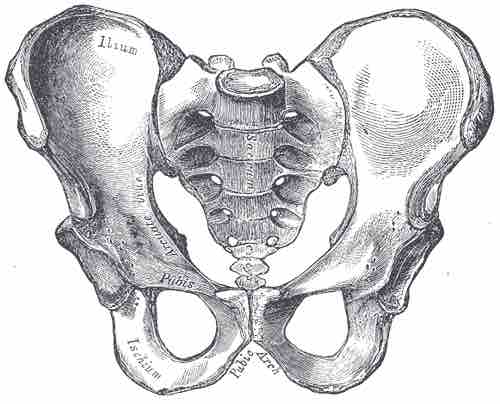Human sex differences in pelvic shape have emerged over the course of human evolution. The human pelvis is narrower and smaller than that of our closest living relatives, the apes. These changes in the pelvis enable bipedal locomotion, or upright walking.
This narrowing of the pelvis has also affected the way humans give birth, as a narrow pelvis makes it more difficult for an infant to move through the birth canal. This problem is compounded, because as human pelvises became smaller, the heads of infants became larger to accommodate increased brain size.
Since the pelvis is vital for both efficient locomotion and childbirth, natural selection has been forced to strike a compromise between a wide pelvis to facilitate birthing large-brained infants and having a narrow pelvis to increase locomotive efficiency. This compromise has been referred to as the obstetrical dilemma. Thus, the female pelvis has evolved to be as wide as possible, to make childbirth easier, without becoming so wide as to make bipedal locomotion too inefficient .
Additionally, the female pubic symphysis, which is the cartilaginous joint connecting the left and right side of the pelvis, is remodeled by hormones released during pregnancy, allowing it to stretch during childbirth.
Male pelves are not constrained by the issue of childbirth, and thus are narrower and more optimal for bipedal locomotion. Wider hips in females cause an increased valgus angle, which is the angle between the femur and lower leg. This increases the risk of torsional knee injuries.

The Male Pelvis
The male pelvis is narrower than that of the female, as can be seen by the less than 90 degree angle of the pubic arch.

The Female Pelvis
The female pelvis is wider than that of the male, as can be seen by the greater than 90 degree angle of the pubic arch.